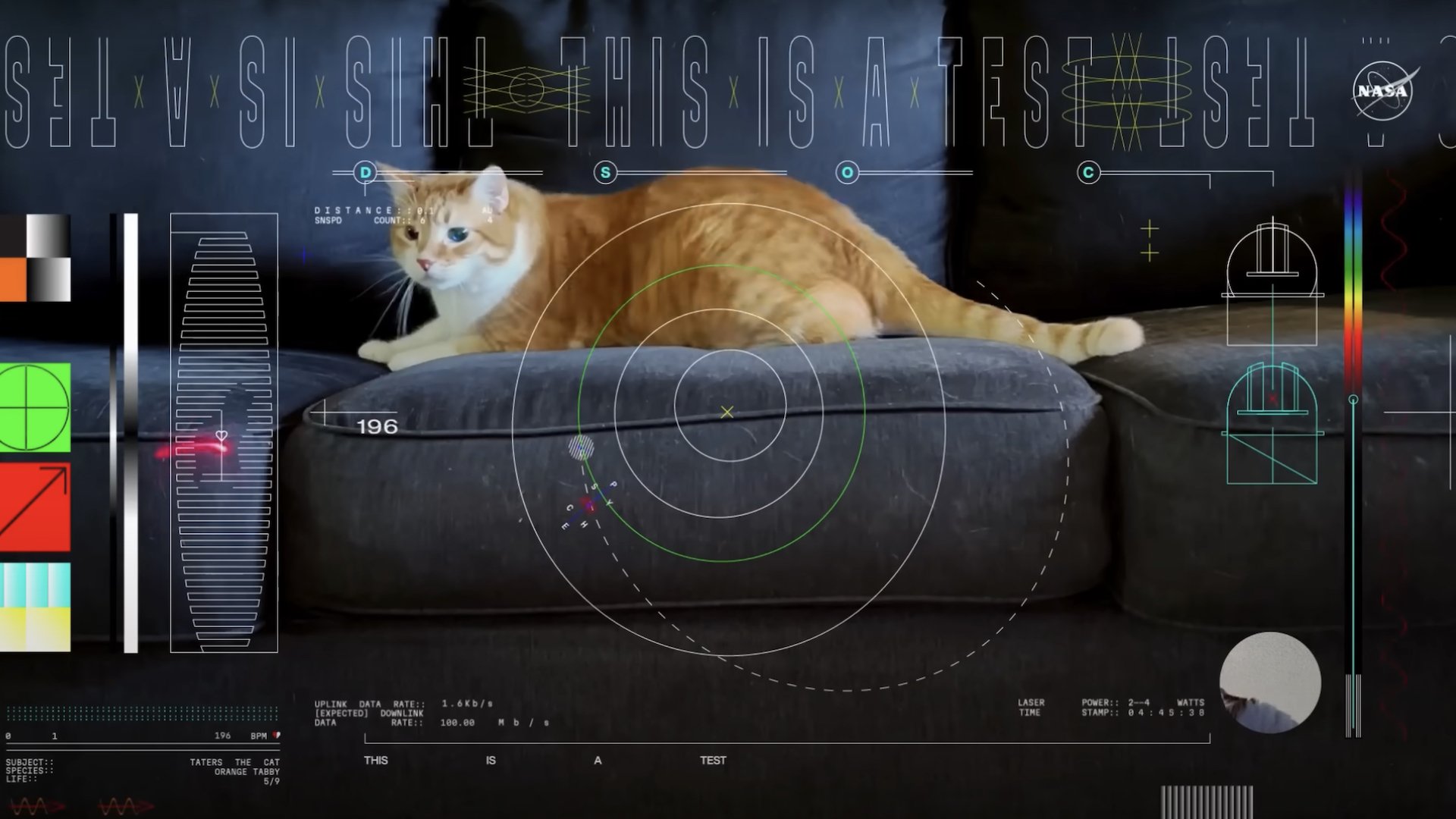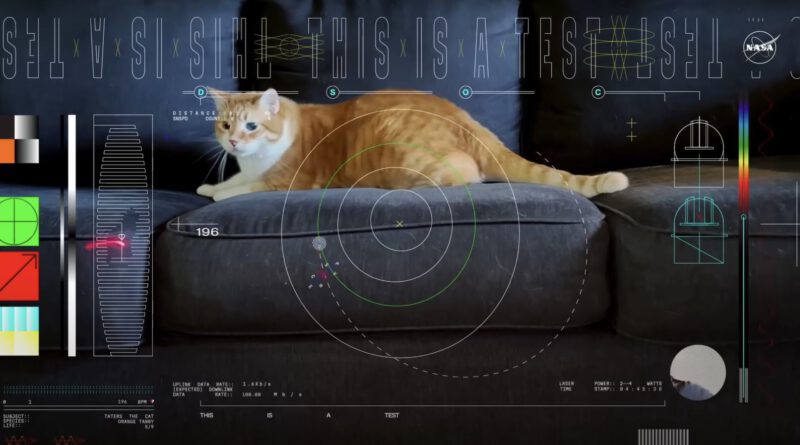NASA beamed a cat video back to Earth from deep space

NASA has a lot on its plate, between staring at strange things on Uranus, monitoring solar flares, investigating Enceladus, visualising Mars’ wet past, probing dead stars, recovering space rock, figuring out what’s going on with Voyager, and generally preparing to get humans on the moon.
But there’s always time for a cat video, especially one beamed from deep space.
On Monday, NASA announced it had transmitted an ultra high definition video of a ginger cat named Taters (superb) from 19 million miles away from Earth through the space agency’s Deep Space Optical Communications (DSOC) experiment, which demonstrates visual data sent from distances beyond the moon.
Beamed from the Psyche spacecraft, the 15-second transmission happened on Dec. 11 using a deeply fancy instrument aboard called a flight laser transceiver. According to NASA, this device beamed a near infrared laser to the Hale Telescope at Palomar in San Diego County, where the data was downloaded and sent to JPL to be streamed live for the team. The whole thing took took about 101 seconds to transmit from spacecraft to Earth at 267 megabits per second.
Here’s Taters, the pet cat of an employee of NASA’s Jet Propulsion Laboratory, making history by chasing a laser pen around on a couch:
NASA explained the graphics on top of Taters are all part of the DSOC demo, showing not only the cat’s heart rate but Psyche’s orbit, the laser’s bit rate, and the shape of the telescope dome at Caltech’s Palomar Observatory.
If it feels gimmicky, it’s actually a major step forward in NASA’s aim to establish high bandwidth video streaming from deep space, an essential part of human missions into these realms.
“This accomplishment underscores our commitment to advancing optical communications as a key element to meeting our future data transmission needs,” said NASA deputy administrator Pam Melroy in a press statement. “Increasing our bandwidth is essential to achieving our future exploration and science goals, and we look forward to the continued advancement of this technology and the transformation of how we communicate during future interplanetary missions.”
I, for one, hope Taters got more than a few piles of catnip for this historic moment.
